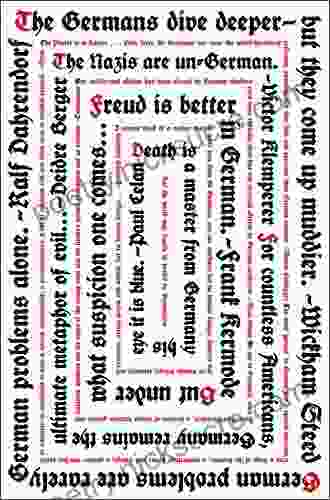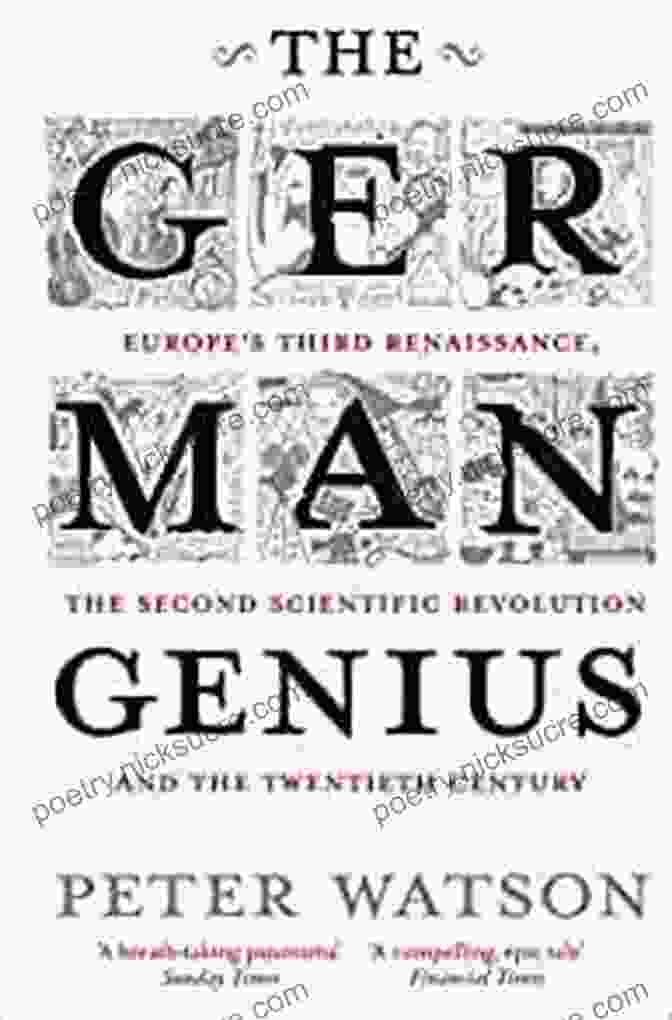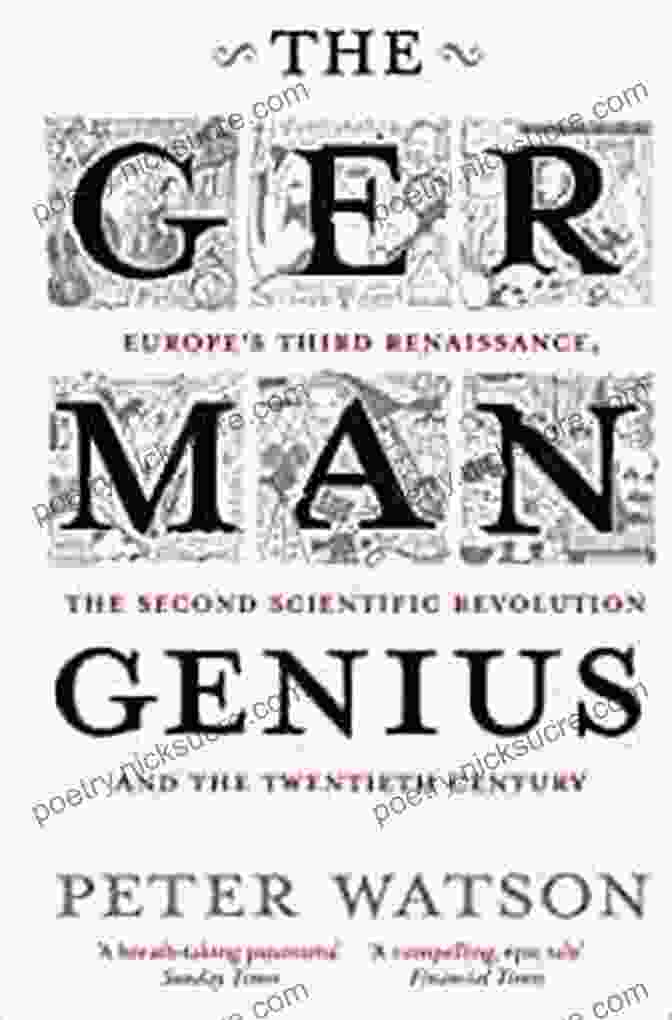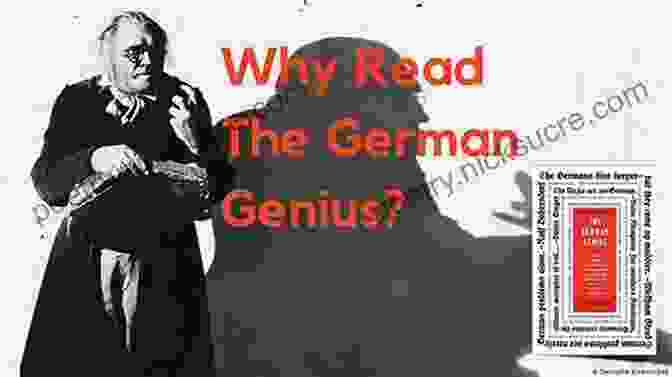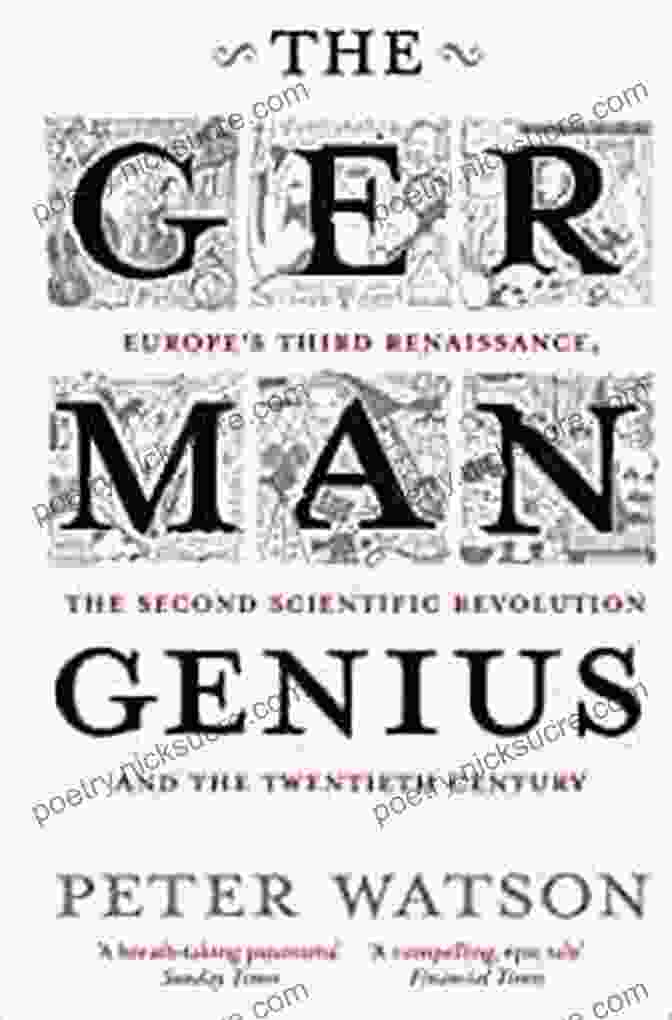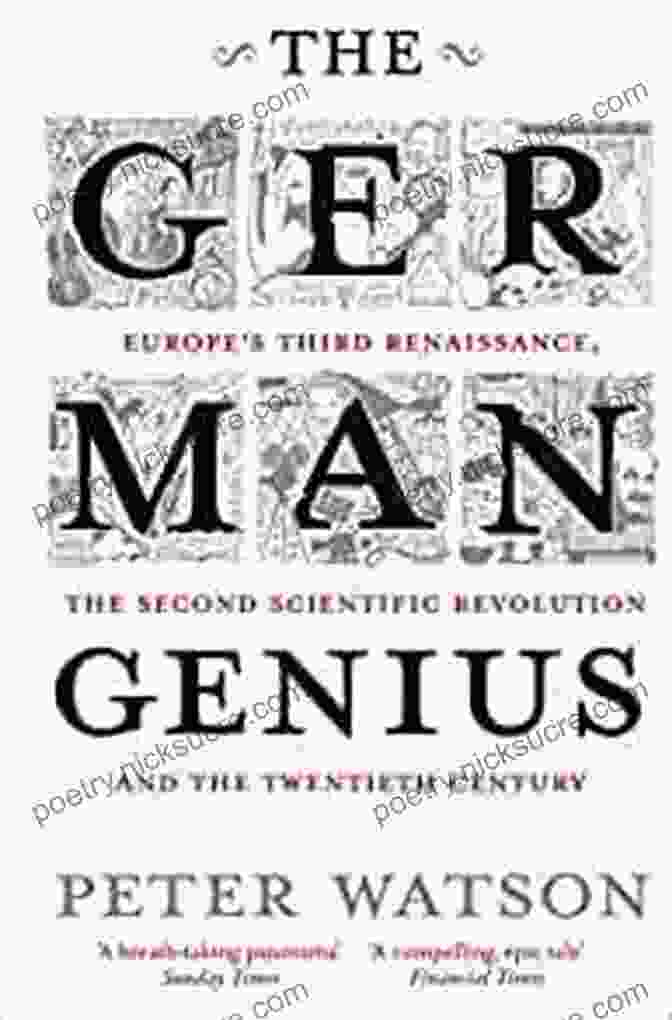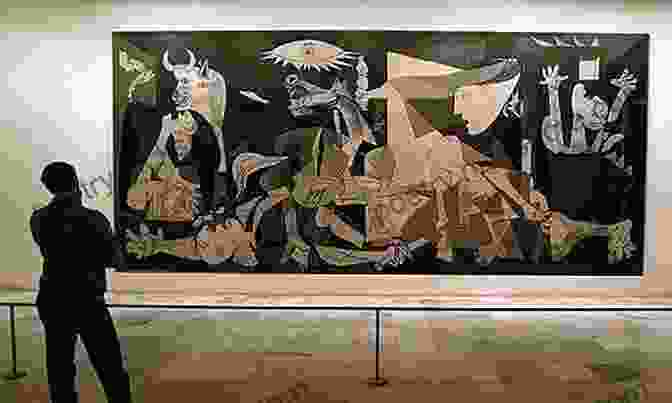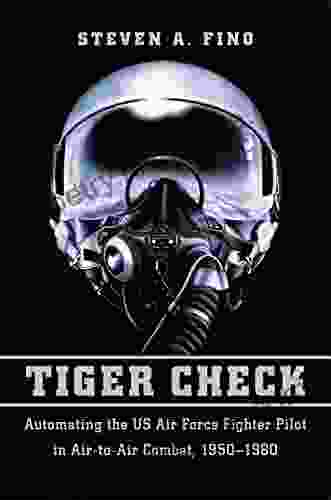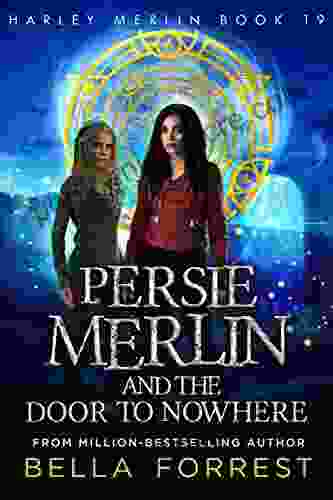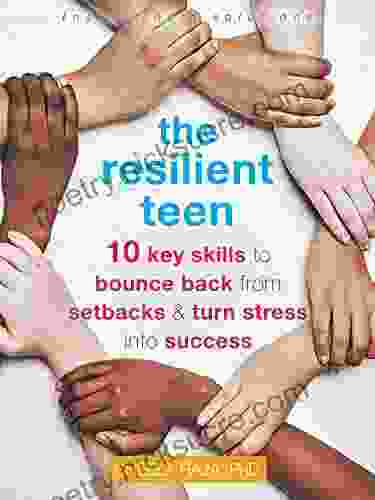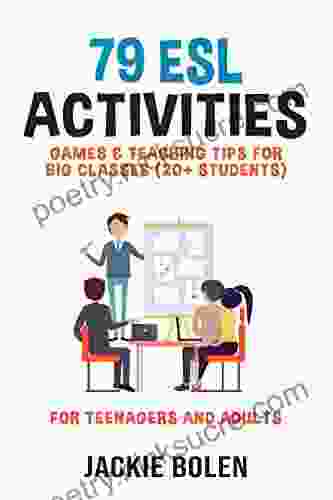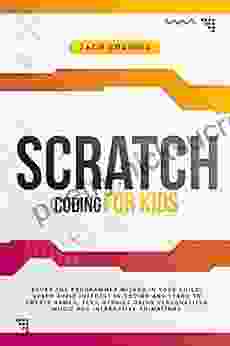Europe's Third Renaissance: The Second Scientific Revolution and the Twentieth Century

The 20th century witnessed a period of profound transformation in Europe and the world beyond. This era, often referred to as Europe's Third Renaissance, was characterized by a second scientific revolution, which brought forth groundbreaking discoveries and technological advancements. These changes had a ripple effect on society, influencing everything from the arts to economics and social structures.
4.6 out of 5
| Language | : | English |
| File size | : | 3189 KB |
| Text-to-Speech | : | Enabled |
| Screen Reader | : | Supported |
| Enhanced typesetting | : | Enabled |
| Word Wise | : | Enabled |
| Print length | : | 992 pages |
The Second Scientific Revolution
The Second Scientific Revolution began in the 19th century and extended into the 20th century. It was a period of rapid scientific discovery and technological innovation that built upon the foundations laid by the Scientific Revolution of the 16th and 17th centuries. Key figures of this era included Albert Einstein, Marie Curie, and Max Planck, who made groundbreaking contributions to physics, chemistry, and quantum theory.
One of the most important developments of this period was the theory of relativity, proposed by Albert Einstein in 1905. This theory revolutionized our understanding of space, time, and gravity, and had a profound impact on the development of modern physics. Another major advancement was the discovery of radioactivity by Marie Curie in 1898. This discovery led to the development of nuclear energy and medical applications such as radiation therapy.
Technological Developments
The Second Scientific Revolution also led to significant technological advancements that transformed everyday life. The invention of the automobile, the airplane, and the telephone revolutionized transportation and communication. The development of electricity and the internal combustion engine brought about new industries and created new job opportunities.
The rapid pace of technological innovation had a profound impact on society. It led to the rise of mass production, urbanization, and the growth of consumer culture. It also created new challenges, such as environmental pollution and the threat of nuclear war.
Artistic Movements
The Third Renaissance also witnessed a flourishing of artistic movements that reflected the changing social and cultural landscape. Impressionism, Cubism, and Surrealism were among the most influential movements of this period. These movements rejected traditional artistic conventions and embraced new techniques and perspectives, which challenged the way people thought about art and the world.
Impressionism, pioneered by Claude Monet and Pierre-Auguste Renoir, sought to capture the fleeting effects of light and atmosphere. Cubism, led by Pablo Picasso and Georges Braque, broke down objects into geometric shapes, creating a new and abstract form of representation. Surrealism, founded by André Breton, explored the subconscious and the irrational, and produced works that were often dreamlike and fantastical.
Social Transformations
The Third Renaissance also brought about significant social transformations. The industrial revolution led to the rise of the middle class and the decline of the aristocracy. Women began to gain more rights and opportunities, including the right to vote in many countries. The growth of education and literacy led to a more informed and engaged citizenry.
However, this period was also marked by social unrest and political upheaval. The First and Second World Wars brought devastation to Europe and reshaped the political landscape. The rise of communism and fascism led to ideological conflicts that divided nations and societies.
The Third Renaissance was a complex and multifaceted period in European history. It was a time of scientific breakthroughs, technological advancements, artistic innovation, and social transformations. The legacy of this era continues to shape the world we live in today. By understanding the interconnectedness between science, technology, and society during this period, we can gain valuable insights into the forces that drive progress and the challenges that we face in the 21st century.
Image Gallery
4.6 out of 5
| Language | : | English |
| File size | : | 3189 KB |
| Text-to-Speech | : | Enabled |
| Screen Reader | : | Supported |
| Enhanced typesetting | : | Enabled |
| Word Wise | : | Enabled |
| Print length | : | 992 pages |
Do you want to contribute by writing guest posts on this blog?
Please contact us and send us a resume of previous articles that you have written.
 Fiction
Fiction Non Fiction
Non Fiction Romance
Romance Mystery
Mystery Thriller
Thriller SciFi
SciFi Fantasy
Fantasy Horror
Horror Biography
Biography Selfhelp
Selfhelp Business
Business History
History Classics
Classics Poetry
Poetry Childrens
Childrens Young Adult
Young Adult Educational
Educational Cooking
Cooking Travel
Travel Lifestyle
Lifestyle Spirituality
Spirituality Health
Health Fitness
Fitness Technology
Technology Science
Science Arts
Arts Crafts
Crafts DIY
DIY Gardening
Gardening Petcare
Petcare William P Young
William P Young Ling Seto
Ling Seto Michael F Nenes
Michael F Nenes Gill James
Gill James Naomi Tomky
Naomi Tomky Will Kurt
Will Kurt James C Zimring
James C Zimring Mike Roberts
Mike Roberts Anna Flores Locke
Anna Flores Locke College Hippo
College Hippo Stan Gibilisco
Stan Gibilisco Kate Mcvaugh
Kate Mcvaugh Timothy Ellis
Timothy Ellis Roy R Grinker
Roy R Grinker Marie Cirano
Marie Cirano Kathy Morey
Kathy Morey Tim Young
Tim Young Cade Courtley
Cade Courtley Kristian Berg
Kristian Berg Steven Callahan
Steven Callahan Joey Myers
Joey Myers Ariel Dalfen
Ariel Dalfen Harold Davis
Harold Davis Valerie Hansen
Valerie Hansen Patricia Romanowski Bashe
Patricia Romanowski Bashe Adele Faber
Adele Faber Michael Burnett
Michael Burnett Neel Doshi
Neel Doshi Dana James
Dana James Nicholas Clapp
Nicholas Clapp Helen E Lees
Helen E Lees Rick Sparkman
Rick Sparkman Julie Plagens
Julie Plagens Julian Havil
Julian Havil David Woods
David Woods Aaron Mahnke
Aaron Mahnke Mary E Pearson
Mary E Pearson John Edwards
John Edwards Randall Fitzgerald
Randall Fitzgerald Ray Moynihan
Ray Moynihan Elizabeth Wissner Gross
Elizabeth Wissner Gross Daniel Isberner
Daniel Isberner Sherry B Ortner
Sherry B Ortner Julie Creffield
Julie Creffield Sarah Stodola
Sarah Stodola Ralph Waldo Emerson
Ralph Waldo Emerson Boye Lafayette De Mente
Boye Lafayette De Mente Jack Perconte
Jack Perconte Anna Crowley Redding
Anna Crowley Redding Annette Burns
Annette Burns Joy Dawson
Joy Dawson Zoe Moore
Zoe Moore David Soucie
David Soucie Caroline Miller
Caroline Miller Frank Thomas
Frank Thomas Steven G Krantz
Steven G Krantz Silvia M Lindtner
Silvia M Lindtner Charles J Sanders
Charles J Sanders Stefan Hollos
Stefan Hollos Jennifer Kostick
Jennifer Kostick Steve Newell
Steve Newell Christine Hopfgarten
Christine Hopfgarten John Baichtal
John Baichtal Joyce Meyer
Joyce Meyer Margaret Paul
Margaret Paul Antonio Robert
Antonio Robert Dave Hall
Dave Hall Bert Mendelson
Bert Mendelson Peyton Curley
Peyton Curley Winton Porter
Winton Porter Zach Codings
Zach Codings Jacob Ward
Jacob Ward Adil E Shamoo
Adil E Shamoo Annalyn Ng
Annalyn Ng Suzanne I Barchers
Suzanne I Barchers Paul Logothetis
Paul Logothetis Tyler Richards
Tyler Richards Ellen Painter Dollar
Ellen Painter Dollar Steve Olson
Steve Olson Ian Moulding
Ian Moulding Rick Page
Rick Page Jacqueline Winslow
Jacqueline Winslow Fox Fisher
Fox Fisher Gloria Chadwick
Gloria Chadwick Anna Della Subin
Anna Della Subin Elisabeth Haich
Elisabeth Haich Dave Canterbury
Dave Canterbury Julie A Ross
Julie A Ross Ann Zaprazny
Ann Zaprazny Lane Demas
Lane Demas Dave Hughes
Dave Hughes Junior Health Institute
Junior Health Institute Eddie Jones
Eddie Jones Robin Esrock
Robin Esrock Morton Manus
Morton Manus Melvin Fitting
Melvin Fitting Holly Chism
Holly Chism Worley Faver
Worley Faver Jay Allan
Jay Allan Jennifer L Lopez
Jennifer L Lopez Mishka Shubaly
Mishka Shubaly Noel D Justice
Noel D Justice Stephen Tarsitano
Stephen Tarsitano Chronicle Books
Chronicle Books Emmett W Hines
Emmett W Hines Marva Boatman
Marva Boatman Sajni Patel
Sajni Patel Shannon Vallor
Shannon Vallor Oskar Morgenstern
Oskar Morgenstern Lori L Tharps
Lori L Tharps Ruby Mcconnell
Ruby Mcconnell Ann Marie Brown
Ann Marie Brown John Murray
John Murray Rutger Bregman
Rutger Bregman Sean Purchase
Sean Purchase Henry Dillon
Henry Dillon Peter Richmond
Peter Richmond Harley Mcallister
Harley Mcallister John Van Wyhe
John Van Wyhe Clive Scarff
Clive Scarff Bella Forrest
Bella Forrest Julia Galef
Julia Galef Geryn Childress
Geryn Childress Matthew Locricchio
Matthew Locricchio Robby Weber
Robby Weber Stephanie Cave
Stephanie Cave Bernard Stiegler
Bernard Stiegler Buddy Lee
Buddy Lee Peter Wacht
Peter Wacht Roy M Wallack
Roy M Wallack Sharon Rowley
Sharon Rowley Richard Appleton
Richard Appleton James Burke
James Burke Julie C Meloni
Julie C Meloni R K Agarwal
R K Agarwal P M Gilbert
P M Gilbert Charles Dickens
Charles Dickens Anna B Doe
Anna B Doe E R Truitt
E R Truitt C J Brown
C J Brown Darryl Belfry
Darryl Belfry Brian Daccord
Brian Daccord Chic Scott
Chic Scott Dr Harper
Dr Harper Cathy Glass
Cathy Glass William Goldman
William Goldman Stacey A Shannon
Stacey A Shannon Christine Field
Christine Field Michael G Manning
Michael G Manning Paul Mendelson
Paul Mendelson Stephen J Pyne
Stephen J Pyne Eleanor J Sullivan
Eleanor J Sullivan Monroe Wildrose
Monroe Wildrose Susan Spicer
Susan Spicer Annaka Harris
Annaka Harris Peter L Falkingham
Peter L Falkingham Walter Mischel
Walter Mischel Lily Dunn
Lily Dunn Louise Katz
Louise Katz Steven Munatones
Steven Munatones Maya Van Wagenen
Maya Van Wagenen Zena Hitz
Zena Hitz Helge Kragh
Helge Kragh H Jerome Chapman
H Jerome Chapman Paulo Guillobel
Paulo Guillobel Pradeepa Narayanaswamy
Pradeepa Narayanaswamy Kristina Cowan
Kristina Cowan Lisa Manterfield
Lisa Manterfield Josephine Mccarthy
Josephine Mccarthy Joe Hyams
Joe Hyams Christopher T Coughlin
Christopher T Coughlin Mikael Lindnord
Mikael Lindnord Bob Cary
Bob Cary Scott P Sells
Scott P Sells Vittal S Anantatmula
Vittal S Anantatmula Kennedy Achille
Kennedy Achille Paul Bloom
Paul Bloom George Lakoff
George Lakoff Angela Saini
Angela Saini Wendy Leo Smith
Wendy Leo Smith Seth Stephens Davidowitz
Seth Stephens Davidowitz Philip Reed
Philip Reed Reinhard Kleist
Reinhard Kleist Nelson Dellis
Nelson Dellis Kalman Samuels
Kalman Samuels M Shawn Copeland
M Shawn Copeland Hanumant Deshmukh
Hanumant Deshmukh Joanna Wells
Joanna Wells June Hur
June Hur Anna Grafl
Anna Grafl Jonathan Pd Buckley
Jonathan Pd Buckley Sheela Raja
Sheela Raja Larry Semento
Larry Semento Melanie Dickerson
Melanie Dickerson Susan M Schneider
Susan M Schneider The Pinnacle Review
The Pinnacle Review Miley Smiley
Miley Smiley Good Books
Good Books Helen Adrienne
Helen Adrienne Gary Chapman
Gary Chapman Stacey Williams
Stacey Williams Jenna Evans Welch
Jenna Evans Welch Graham Robb
Graham Robb Caryl Phillips
Caryl Phillips Jessa Stone
Jessa Stone Ford R Bryan
Ford R Bryan Heidi Kreider
Heidi Kreider Breeda Bermingham
Breeda Bermingham Malcolm S Thaler
Malcolm S Thaler Geoff Greig
Geoff Greig Barry Dainton
Barry Dainton Dean Buonomano
Dean Buonomano Margaret Rogerson
Margaret Rogerson Jemar Tisby
Jemar Tisby Anna Wood
Anna Wood Tim Cahill
Tim Cahill Scott Allan
Scott Allan John Dickson
John Dickson Claire Walter
Claire Walter Douglas Perry
Douglas Perry Skeleton Steve
Skeleton Steve Wayne C Booth
Wayne C Booth Illysa R Foster
Illysa R Foster Horace Kephart
Horace Kephart Dan Vogel
Dan Vogel Charlene Beswick
Charlene Beswick David Berry
David Berry Rebecca A Moyes
Rebecca A Moyes Mark Mckinney
Mark Mckinney W W Sawyer
W W Sawyer Tara Haelle
Tara Haelle Sparknotes
Sparknotes Quinn Loftis
Quinn Loftis Anna Quindlen
Anna Quindlen Michael Labossiere
Michael Labossiere Gwen Mckee
Gwen Mckee Barry Schwartz
Barry Schwartz Todd Radom
Todd Radom Annabel Streets
Annabel Streets Horace Freeland Judson
Horace Freeland Judson Steven Yellin
Steven Yellin Anna Ivey
Anna Ivey Jonathan Franklin
Jonathan Franklin Timothy P Schultz
Timothy P Schultz Jeff Kuehl
Jeff Kuehl Katie Krimer Ma Lcsw
Katie Krimer Ma Lcsw John Dunn
John Dunn Dan Gardner
Dan Gardner Hannah Testa
Hannah Testa Sean Covey
Sean Covey Steve Bennett
Steve Bennett L Chapman
L Chapman Victor Stringer
Victor Stringer Howard Means
Howard Means Luke Schumacher
Luke Schumacher Stuart Tomlinson
Stuart Tomlinson Steve Bowkett
Steve Bowkett Jenny Jacobs
Jenny Jacobs Damian Hall
Damian Hall Robert F Boszhardt
Robert F Boszhardt George James Grinnell
George James Grinnell Danny Jones
Danny Jones Ichigo Takano
Ichigo Takano Randy J Paterson
Randy J Paterson Neal Shusterman
Neal Shusterman Ann Voskamp
Ann Voskamp Bob Labbe
Bob Labbe Shawn Shallow
Shawn Shallow Holly Bourne
Holly Bourne Genevieve Mckay
Genevieve Mckay Barak A Bassman
Barak A Bassman Earl Hipp
Earl Hipp Marjorie Savage
Marjorie Savage Mark Matlock
Mark Matlock Sally Black
Sally Black Ken Robinson
Ken Robinson Barbara Sealock
Barbara Sealock Richard Mcafee
Richard Mcafee Christina Henry De Tessan
Christina Henry De Tessan Sharman Apt Russell
Sharman Apt Russell Glen E Clarke
Glen E Clarke Johnny Chuong
Johnny Chuong Philip Gibson
Philip Gibson Richard C Schwartz
Richard C Schwartz Richard A Ruth
Richard A Ruth Martin N Seif
Martin N Seif Peter Watson
Peter Watson Christelle Dabos
Christelle Dabos Susan Straub
Susan Straub Alexander L Chapman
Alexander L Chapman Nancy Marie White
Nancy Marie White Ann Valett
Ann Valett Matthew Rudy
Matthew Rudy Pawel Malczewski
Pawel Malczewski Stefanie Japel
Stefanie Japel Todd Denault
Todd Denault Lisa Randall
Lisa Randall Arcturus Publishing
Arcturus Publishing Chris Gore
Chris Gore Lily Siou
Lily Siou Sean Bartram
Sean Bartram Janine Marsh
Janine Marsh Frances Schultz
Frances Schultz Jean Barbre
Jean Barbre Dannah Gresh
Dannah Gresh Sukhveer Singh
Sukhveer Singh Bruce Lockwood
Bruce Lockwood Finn Aagaard
Finn Aagaard Steve Grant
Steve Grant Jason
Jason Chase Hassen
Chase Hassen C W Farnsworth
C W Farnsworth Jackson Carter
Jackson Carter Judy Corry
Judy Corry Jonathan R Brennan
Jonathan R Brennan Becky Wade
Becky Wade Sara Wickham
Sara Wickham Lizzie Collingham
Lizzie Collingham R A Salvatore
R A Salvatore Chris Bailey
Chris Bailey Susan G Solomon
Susan G Solomon Les Livingstone
Les Livingstone Maggie Downs
Maggie Downs J Scott Long
J Scott Long Donna D Ignatavicius
Donna D Ignatavicius Laurie Varga
Laurie Varga Dante Fortson
Dante Fortson Matthew Cobb
Matthew Cobb Kendall Coyne
Kendall Coyne Zach Davis
Zach Davis John Yates
John Yates John O Sullivan
John O Sullivan Jay Young
Jay Young Tony Osgood
Tony Osgood Steve Schwartz
Steve Schwartz Darcie Little Badger
Darcie Little Badger Karen Bassie Sweet
Karen Bassie Sweet Martin Meredith
Martin Meredith Margaret Jean Langstaff
Margaret Jean Langstaff Suzanne Clark
Suzanne Clark Steve Oldenburg
Steve Oldenburg Craig Ramsay
Craig Ramsay Sara Dyer
Sara Dyer Jennifer Dugan
Jennifer Dugan Nisha Garg
Nisha Garg John Gignilliat
John Gignilliat Patrick Torsell
Patrick Torsell Linda K Miller
Linda K Miller Bethany Saltman
Bethany Saltman Krista Marson
Krista Marson Tanmay Mehta
Tanmay Mehta Illustrated Edition Kindle Edition
Illustrated Edition Kindle Edition Peter Hathaway Capstick
Peter Hathaway Capstick Ellen Dugan
Ellen Dugan Robert A Cook
Robert A Cook Asker Jeukendrup
Asker Jeukendrup Ann Mccallum Staats
Ann Mccallum Staats Shelley Emling
Shelley Emling Anna Watson
Anna Watson Prime Hall
Prime Hall Patricia Ladis
Patricia Ladis Linda Lewis Alexander
Linda Lewis Alexander Livia Bitton Jackson
Livia Bitton Jackson Fumio Sasaki
Fumio Sasaki Sandy Bodeau
Sandy Bodeau Hope Comerford
Hope Comerford H M Schey
H M Schey Suzanne Girard Eberle
Suzanne Girard Eberle Richard A Swanson
Richard A Swanson Jay Spence
Jay Spence Chris Fregly
Chris Fregly Mordecai Orimiladeye
Mordecai Orimiladeye Cb Droege
Cb Droege Vladimir Vasiliev
Vladimir Vasiliev M Terese Verklan
M Terese Verklan Robert A Conover
Robert A Conover Barb Musick
Barb Musick Melissa Mortenson
Melissa Mortenson Sally Connolly
Sally Connolly John Pullen
John Pullen Rebecca Carroll
Rebecca Carroll Ralph Cockburn
Ralph Cockburn Daphne Poltz
Daphne Poltz L J Smith
L J Smith Jill Lepore
Jill Lepore Eric Greitens
Eric Greitens Dorothy Ours
Dorothy Ours James C Scott
James C Scott Mike Reilly
Mike Reilly Lexi Ryan
Lexi Ryan Bren Smith
Bren Smith Gemma Bray
Gemma Bray Julian Of Norwich
Julian Of Norwich Michael Witwer
Michael Witwer Bob Madgic
Bob Madgic Crystal Cook
Crystal Cook Ray Eye
Ray Eye Robert Gerver
Robert Gerver Alex Bromley
Alex Bromley L A Cotton
L A Cotton Freddy Silva
Freddy Silva Thomas A Garrity
Thomas A Garrity Isaac Fitzsimons
Isaac Fitzsimons James F Twyman
James F Twyman Scott Shupe
Scott Shupe Christopher Seddon
Christopher Seddon Anna Lowenhaupt Tsing
Anna Lowenhaupt Tsing Creative Guy
Creative Guy Carl Mckeating
Carl Mckeating G Norman Lippert
G Norman Lippert Joshua Shifrin
Joshua Shifrin Pierluigi Barrotta
Pierluigi Barrotta Zach Hunter
Zach Hunter Kyung Won Chung
Kyung Won Chung Katharine Beals
Katharine Beals Harnarayan Singh
Harnarayan Singh Dave Whitlock
Dave Whitlock Curtis Collins
Curtis Collins Larry Thornberry
Larry Thornberry Louis Van Dyke
Louis Van Dyke Steven A Fino
Steven A Fino Michael Tan
Michael Tan J E Esslemont
J E Esslemont Anne Sylvie Malbrancke
Anne Sylvie Malbrancke James P Sethna
James P Sethna Justine Gregory Williams
Justine Gregory Williams Tali Sharot
Tali Sharot Hill Harper
Hill Harper Kristen L Mauk
Kristen L Mauk Jackie Bolen
Jackie Bolen Tarani Chandola
Tarani Chandola Sally Annjanece Stevens
Sally Annjanece Stevens Sam Demas
Sam Demas Guy Windsor
Guy Windsor Ben Shneiderman
Ben Shneiderman Omari Bouknight
Omari Bouknight L J Martin
L J Martin Jenn Bennett
Jenn Bennett Dan Koboldt
Dan Koboldt Anna Bright
Anna Bright Nicholas Thomas
Nicholas Thomas Dr Sarita Uhr
Dr Sarita Uhr Emily J Taylor
Emily J Taylor Sandy Camillo
Sandy Camillo Trevor Hartman
Trevor Hartman Lina Beard
Lina Beard Gilbert J Grant Md
Gilbert J Grant Md Michael Hodgson
Michael Hodgson Kass Morgan
Kass Morgan Roger Hall
Roger Hall
Light bulbAdvertise smarter! Our strategic ad space ensures maximum exposure. Reserve your spot today!
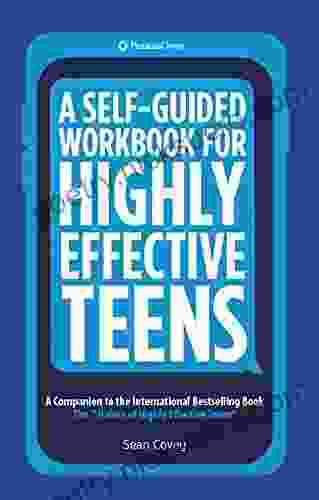
 Julio CortázarEmpowering Teens: A Comprehensive Self-Guided Workbook for Highly Effective...
Julio CortázarEmpowering Teens: A Comprehensive Self-Guided Workbook for Highly Effective...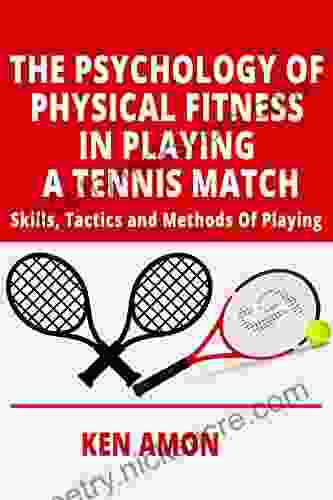
 Joshua ReedThe Psychology of Physical Fitness in Playing a Tennis Match: A Comprehensive...
Joshua ReedThe Psychology of Physical Fitness in Playing a Tennis Match: A Comprehensive... Federico García LorcaFollow ·2.3k
Federico García LorcaFollow ·2.3k Ronald SimmonsFollow ·6k
Ronald SimmonsFollow ·6k Anthony BurgessFollow ·5k
Anthony BurgessFollow ·5k Jan MitchellFollow ·14.2k
Jan MitchellFollow ·14.2k Julian PowellFollow ·6.5k
Julian PowellFollow ·6.5k Jaylen MitchellFollow ·7.7k
Jaylen MitchellFollow ·7.7k Patrick HayesFollow ·16.8k
Patrick HayesFollow ·16.8k Neal WardFollow ·13.3k
Neal WardFollow ·13.3k
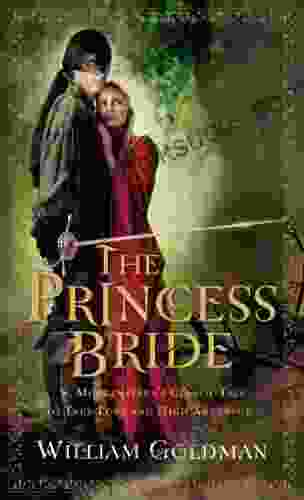
 Aldous Huxley
Aldous HuxleyMorgenstern: A Classic Tale of True Love and High...
Morgenstern is a...

 Beau Carter
Beau CarterThe Oasis Guide to Asperger Syndrome
What is Asperger Syndrome? Asperger...
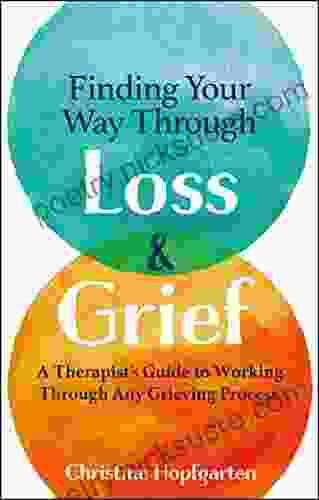
 Chadwick Powell
Chadwick PowellFinding Your Way Through Loss Grief: A Therapist S Guide...
Grief is a natural human emotion that we...
4.6 out of 5
| Language | : | English |
| File size | : | 3189 KB |
| Text-to-Speech | : | Enabled |
| Screen Reader | : | Supported |
| Enhanced typesetting | : | Enabled |
| Word Wise | : | Enabled |
| Print length | : | 992 pages |


